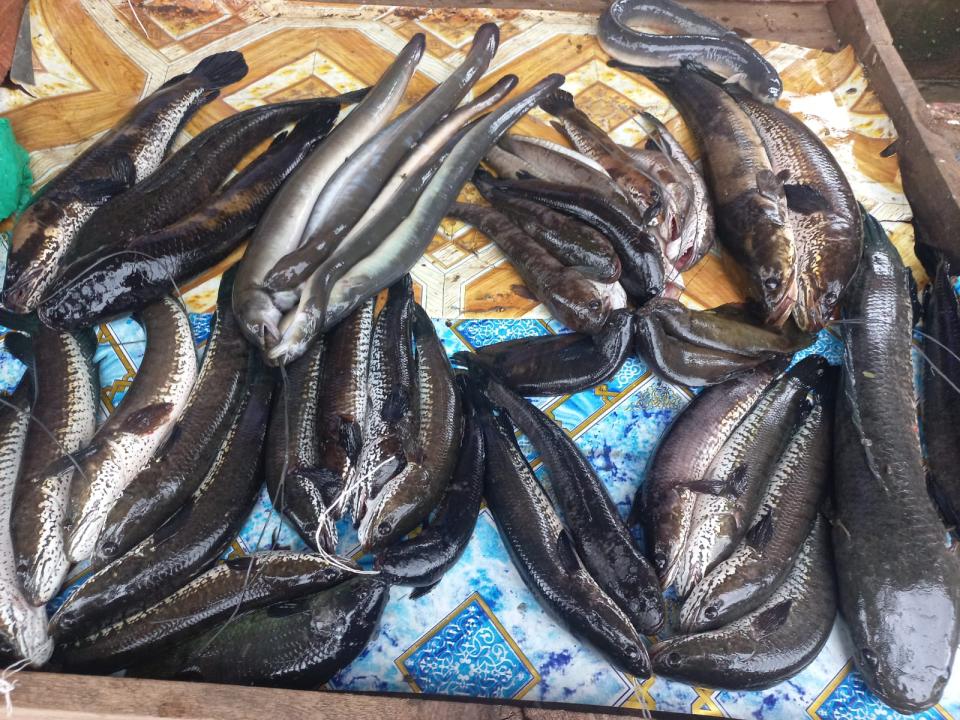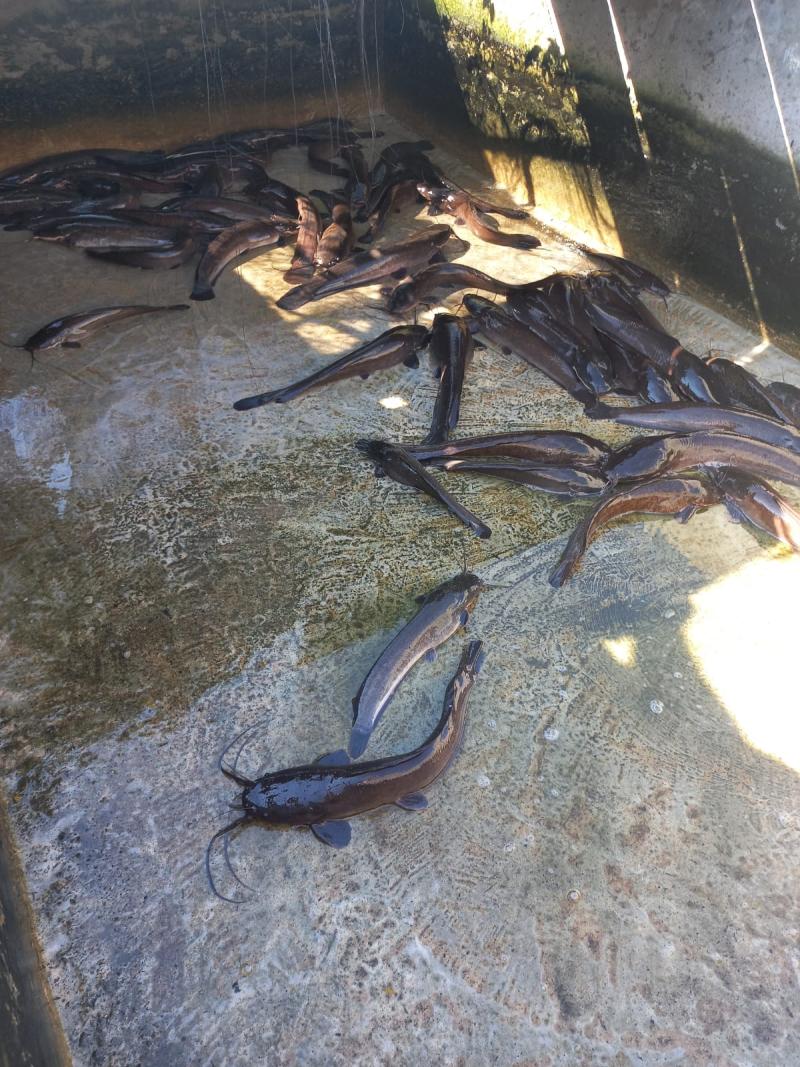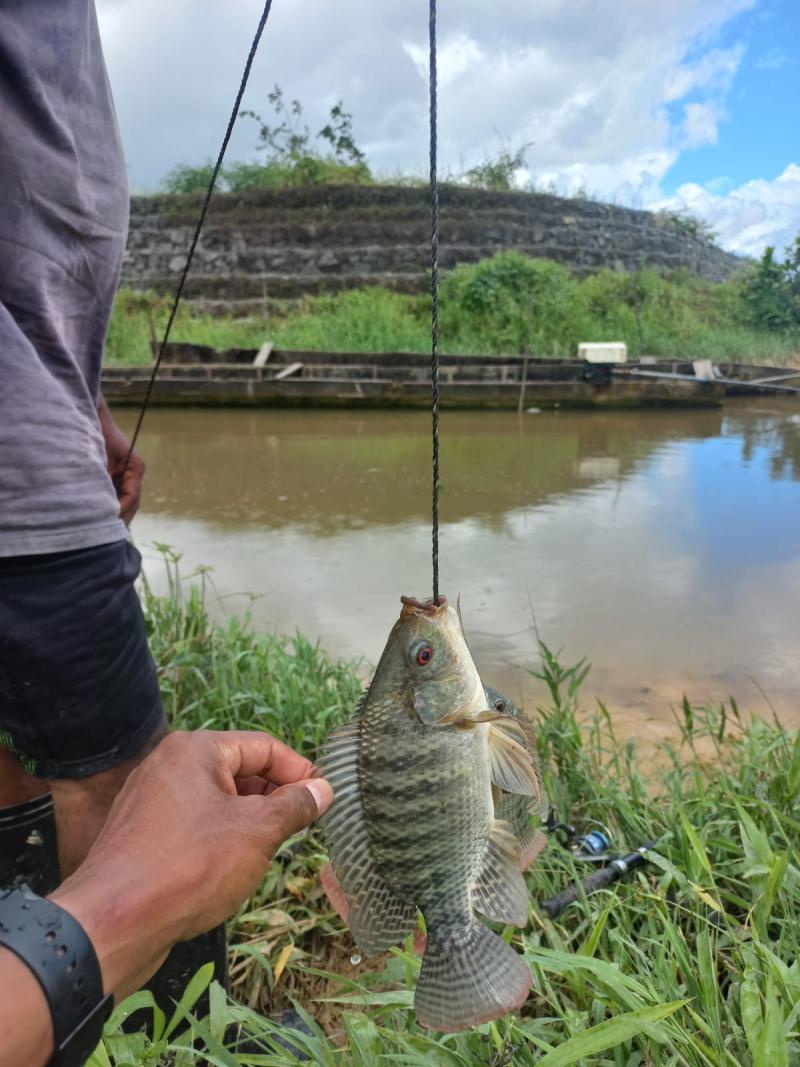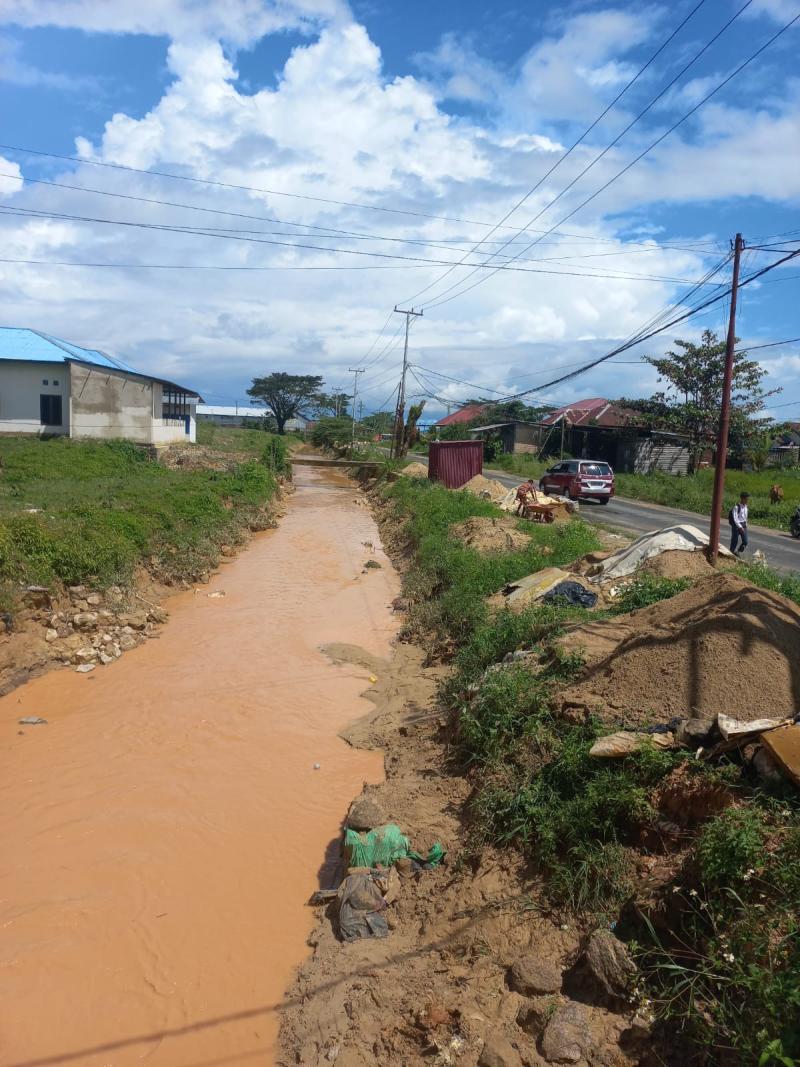In 1963, Indonesia took control of West Papua through a controversial UN-backed process. In Settling for Less, Lachlan McNamee estimates that, between 1978 and 2000, almost 300,000 settler farmers were deployed to Papua under “Transmigration”—an Indonesian program that moved farmers from crowded Java, Bali, and Sulawesi to sparsely populated regions including Papua.

Three invasive air-breathing fish. From the left: Betik, Mujair, and Snakehead fish.
Three invasive air-breathing fish. From the left: Betik, Mujair, and Snakehead fish.
Photograph by Hatib A. Kadir.
 This work is licensed under a Creative Commons Attribution 4.0 International License.
This work is licensed under a Creative Commons Attribution 4.0 International License.
Transmigration is a form of settler colonialism that functions as multispecies colonialism, using both human settlers and non-human agents to control Papuans. In Sophie Chao’s ethnography, In the Shadow of the Palms: More-Than-Human Becomings in West Papua, the oil palm acts as an agent of biodiversity loss. Echoing this, I show how four introduced fish—Ikan Gabus or Snakehead (Channa striata), Mujair or Mozambique tilapia (Oreochromis mossambicus), Lele or walking catfish (Clarias spp.), and Nile tilapia (O. niloticus)—have become instruments of ecological domination, reshaping waterways and displacing native species.
In 1975, the Indonesian government sought funding for a reservoir fisheries project in Irian Jaya (now Papua) under the UNDP’s Freedom from Hunger initiative. This pursuit of international aid framed Papua as an empty and underutilized landscape. In Sorong—my field site since 2019—the Directorate General of Fisheries launched the “Enhancement and Development of Inland Fisheries Production” project in 1978. A ten-hectare training block was cleared in Klasaman, where extension officers taught newly arrived transmigrants how to build ponds and raise the introduced freshwater fish.

Invasive fish captured by settlers using electrocution. The fish are not killed but merely stunned.
Invasive fish captured by settlers using electrocution. The fish are not killed but merely stunned.
Photograph by Hatib A. Kadir.
 This work is licensed under a Creative Commons Attribution 4.0 International License.
This work is licensed under a Creative Commons Attribution 4.0 International License.
A senior settler in Sorong recalled that Sulawesi migrants introduced Mozambique tilapia around 1983, when swamps were still populated by crocodiles. These fish were bred in local ponds. In 2001, as recalled by a senior extension worker, fish stocking intensified through government initiatives, supported by Special Autonomy (Otsus) and later the Village Fund (Dana Desa) from 2008. These funds aimed to stimulate the Papuan economy and suppress independence movements, but Papuans themselves were excluded and gained no benefit from these projects. Fisheries officials promoted introduced species—catfish, Mozambique tilapia, and Nile tilapia—while settler-dominated fish farming groups emerged to access funding and expand aquaculture.

Jumbo catfish broodstock can jump out of the pond during a fight, and escape.
Jumbo catfish broodstock can jump out of the pond during a fight, and escape.
Photograph by Hatib A. Kadir.
 This work is licensed under a Creative Commons Attribution 4.0 International License.
This work is licensed under a Creative Commons Attribution 4.0 International License.
Over time, fish farming groups disbanded—not only because grants mainly favored settler fishers, but also due to funds being siphoned off by bureaucrats. Abandoned ponds allowed fish to escape into canals and artificial rivers. Despite repeated failures, the fisheries office continued deploying inland fish. On 14 October 14 2023, the governor of West Papua released 1,000 Nile tilapia into Sorong’s Mangrove Ecotourism Area, claiming it would enrich the brackish ecosystem and improve food security. Fish were released from oxygen-filled plastic bags before a crowd. However, during my July 2024 fieldwork, with field officer Andy, we observed that the fish—released at high tide—had not remained in the mangrove zone. As the tide receded, they moved into drainage canals and urban ditches, where they became dominant freshwater predators.
This case shows that Indonesian experts introduce freshwater species based on the logic of aqua nullius, a term coined by Virginia Marshall that parallels terra nullius—the idea that land was unoccupied before European settlement. Aqua nullius ignores or denies the existence of Papuan activities and species in wetlands. This belief drives the government to deploy invasive fish to dominate wetlands, believing their rapid reproduction will support food security for settlers and Papuans.

Nile Tilapia fish dominate ditch, ponds, and artificial streams in urban Sorong.
Nile Tilapia fish dominate ditch, ponds, and artificial streams in urban Sorong.
Photograph by Hatib A. Kadir.
 This work is licensed under a Creative Commons Attribution 4.0 International License.
This work is licensed under a Creative Commons Attribution 4.0 International License.
During fieldwork each summer (July to August) from 2022 through 2024, I observed how human infrastructure helps invasive species spread in Sorong. Since the 2000s, sand mining upstream has caused the Public Works Department (PU) to build artificial rivers and canals to manage sediment and prevent mud floods. Urban engineers straightened rivers and diverted water into canals. The increased sediment made waters murky and damaged endemic fish such as Sorong rainbow fish (Melanotaeniidae), Milo fish (Glossogobius), Nagi (Plotosidae), and freshwater shrimp (Cherax warsamsonicus). These species survive only in clear, flowing water. Artificial canals flow only during floods. In the dry season, water hyacinth and lettuce grow, creating low-oxygen habitats where air-breathing invasive fish thrive. The four introduced species—snakehead fish, catfish, Mozambique tilapia, and Nile tilapia—spread quickly. Floods allowed them to escape ponds and colonize waterways, where they outcompete endemic species.
The freshwater fish introduced by Indonesian officials and settlers became invasive and remarkably resilient against illegal fishing methods such as electrocution. Settler fishers also use banned insecticides—including Tiodan and Akodan—to poison rivers, but invasive fish resist these chemicals. Fish from ponds escape during floods, repopulate polluted rivers, and revert to feral populations, maintaining dominance in the ecosystem.

A polluted river that kills endemic fish, while allowing invasive freshwater fish to survive.
A polluted river that kills endemic fish, while allowing invasive freshwater fish to survive.
Photograph by Hatib A. Kadir.
 This work is licensed under a Creative Commons Attribution 4.0 International License.
This work is licensed under a Creative Commons Attribution 4.0 International License.
Examining settler infrastructure—ponds, canals, and artificial rivers—reveals how state experts, driven by expansive nationalist ideologies, have transformed West Papua’s landscape through what anthropologist Jenny Munro calls “racial technocratic” practices that disregard both human and non-human natives. While recent multispecies studies often frame new ecologies as unintended byproducts of infrastructure, my research points to a more deliberate neglect. Interviews with fisheries facilitators and aid recipients reveal that settlers and officials knew the high costs of domestication—ponds, nets, feed, oxygen, fertilizers, and aid. Yet they deliberately ignored failures and the spread of invasive fish.
The introduction of freshwater species reflects a pattern of deliberate neglect—a calculated strategy by Indonesian state apparatuses to dominate colonized land and waterscapes. This begins with state-initiated interventions, such as transmigration or species introduction, which are then left to continue autonomously. As McNamee notes, the shift from “state-led colonialism” to “settler-led colonialism” allows the state to withdraw while settlers, civilians, or—as in this case—invasive species continue to carry out the work. This pattern of deliberate neglect mirrors broader postcolonial violence in Indonesia, where the state triggers harm—against communists, Indigenous peoples, or ethnic minorities—and then lets it escalate through mass civilian participation. In West Papua, deliberate neglect thus operates as a recurring mode of violence against both human and nonhuman life.
How to cite
Kadir, Hatib A. “Freshwater Fish Invasion as Deliberate Neglect: Unpacking Multispecies Colonialism in West Papua.” Environment & Society Portal, Arcadia (Autumn 2025), no. 10. Rachel Carson Center for Environment and Society. https://www.environmentandsociety.org/node/10025.
ISSN 2199-3408
Environment & Society Portal, Arcadia
 This work is licensed under a Creative Commons Attribution 4.0 International License.
This work is licensed under a Creative Commons Attribution 4.0 International License.
2025 Hatib A. Kadir
This refers only to the text and does not include any image rights.
Please click on an image to view its individual rights status.
- Anderson, Virginia DeJohn. Creatures of Empire: How Domestic Animals Transformed Early America. New York: Oxford University Press, 2010.
- Chao, Sophie. In the Shadow of the Palms: More-Than-Human Becomings in West Papua. Durham: Duke University Press, 2022.
- Direktorat Jenderal Perikanan. Daftar Isian Proyek (D.I.P.) Tahun 1977/1978: Peningkatan dan Pengembangan Produksi Perikanan Darat, Irian Jaya. Jakarta: Departemen Pertanian, Republik Indonesia, 1977
- Marshall, Virginia. Overturning Aqua nullius: Securing Aboriginal Water Rights. Canberra: Aboriginal Studies Press, 2017.
- McNamee, Lachlan. Settling for Less: Why States Colonize and Why They Stop. Princeton: Princeton University Press, 2023.
- Munro, Jenny. “Global HIV Interventions and Technocratic Racism in a West Papuan NGO.” Medical Anthropology 39, no. 8 (2020): 704–719. doi:10.1080/01459740.2020.1739036
- United Nations Development Programme (UNDP). Letter to Mr. Panoedjoe regarding Reservoir Fisheries Development Project in Irian Jaya, 27 May 1975. Department of Agriculture Archives, Jakarta.








